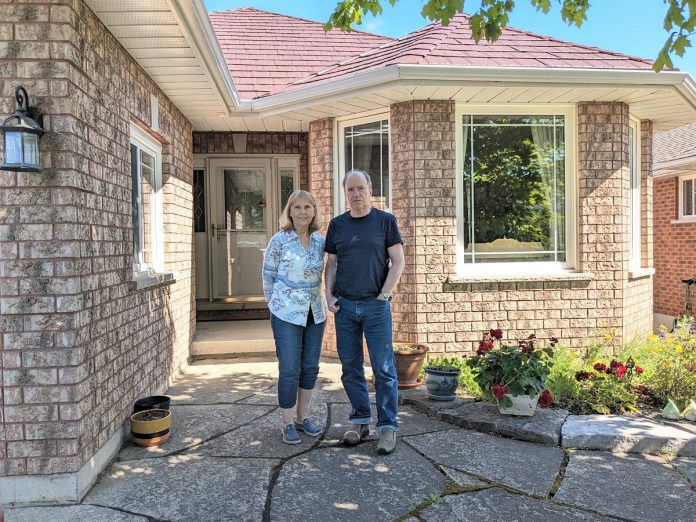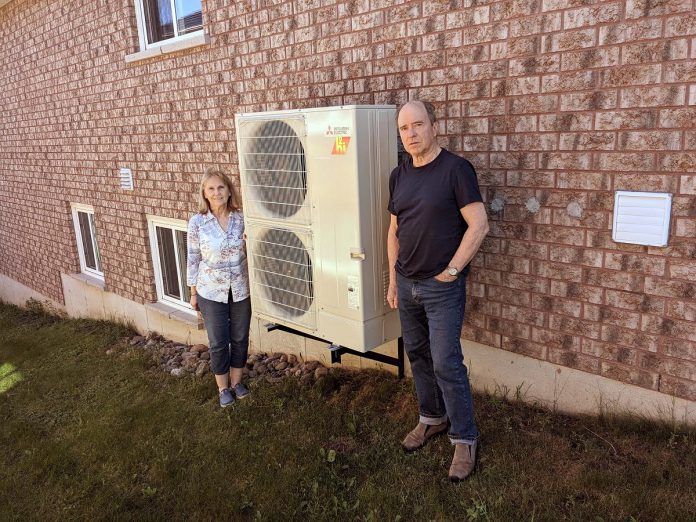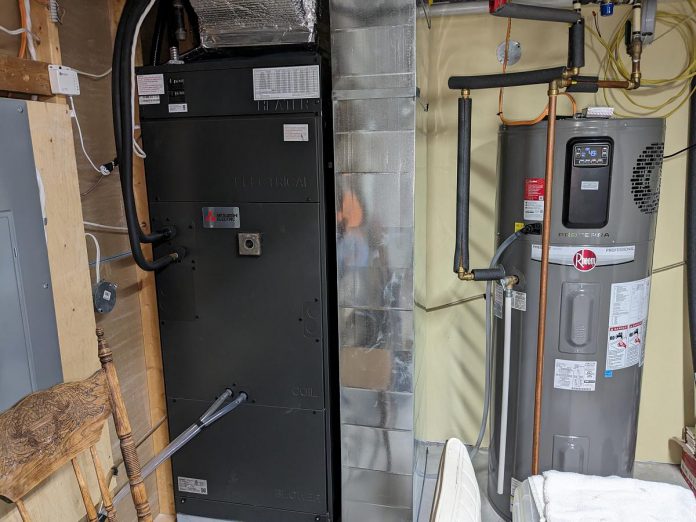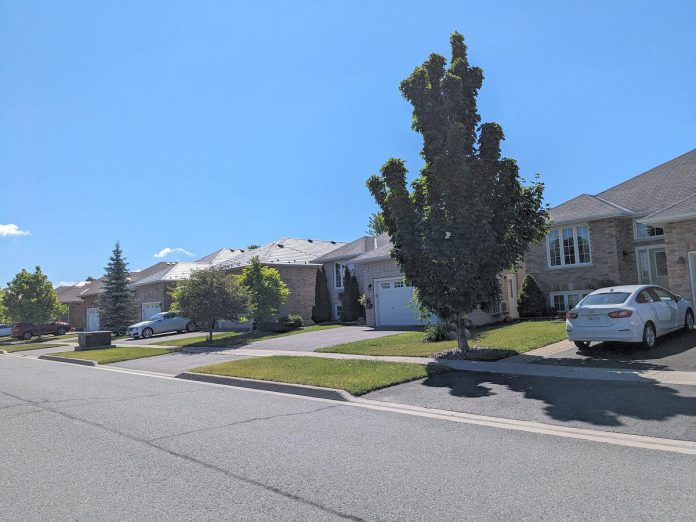
In this series, GreenUP is spotlighting homeowners from Peterborough and the surrounding region who have undertaken deep retrofits on their homes — reducing their energy use by about half and reducing greenhouse gas emissions even further.
When Michael and Norma Doran moved to Peterborough from Toronto, they were looking for a low-maintenance retirement and bought a one-year old home in a subdivision in Peterborough’s west end.
Seventeen years later, the home was ready for some upgrades. The home’s original water heater was at the end of its life, a window had lost its seal, they suspected the attic insulation was insufficient, and the furnace and air conditioner were both 18 years old.
“I figured, with the grants available, it was a good time to get it all done,” says Michael. “I was interested in getting the energy audit done, and knowing that there would be rebates was a motivator.”
In a newer home like the Dorans’, there are generally fewer “building envelope” upgrades to undertake than there would be in a home built earlier. However, despite Michael having previously upgraded the original attic insulation on his own, it was found at the home energy assessment to be only at R30 — a little more than half of today’s building code minimum of R50.
“I know that there was really minimal attic insulation when we moved in,” explains Norma. “In subdivisions, with the economies of scale, sometimes corners get cut.”
Reaching an insulation level of R60 (which is generally recommended) requires 17 to 22 inches of insulation depth, depending on the material used.

After upgrading their attic and one window, the Dorans opted to use efficient heat pump technology to bring their mechanical systems to modern standards. Their home is now heated with a heat pump that has an electric coil for backup on the very coldest days.
They also converted to a heat pump water heater, an induction stove, and a heat pump clothes dryer, and disconnected a gas fireplace. Together this shift to electric made it possible to have the gas line entirely removed from the home.
“We now pay only one energy bill (to Hydro One),” says Michael. “I don’t pay any bills to Enbridge. On average, we’re using about half of the energy that we were using before. This winter, we saved about $70 per month compared to what we were paying before.”
In addition, greenhouse gas emissions from the Dorans home have been reduced by over 86 per cent.
“Compared to other people, we weren’t heavy users before anyway,” Norma says. “We’ve always been careful about turning off lights and all that, but even so we were able to reduce our energy use significantly. We’re also retired so we’re pretty much home all day.”
The upgrades did require an investment. The total cost of the mechanical systems was about $30,000, including a $6,000 electrical service upgrade. They received about $9,000 in rebates.

However, the Dorans see the investment as well worthwhile.
“Although the more efficient options are more expensive, you see the value in the long term — like investing in a metal roof,” says Norma.
“We did also get a discount on our home insurance because we’re no longer burning gas,” adds Michael.
One concern the couple had was that the heat pump would disturb the neighbours since the outdoor unit runs all winter long.
“But it’s very quiet — quieter than some of the furnaces in the neighbourhood,” says Michael.
“And inside the house the system is definitely quieter,” Norma adds. “You don’t get that blast of hot air that you get with a furnace. It runs more continuously, but at a lower volume, with a very even heat. The water heater is right under the bedroom and it isn’t noisy either.”

Michael encourages other homeowners to take the plunge to electrify their homes.
“If you can afford the outlay of money, just do it. I don’t see any downsides.”
If your home is in need of upgrades, consider booking a home energy assessment with GreenUP to provide you with guidance on the best options. An interest-free loan of up to $40,000 is available from Canada Mortgage and Housing Corporation to support deep retrofits. Learn more at greenup.on.ca/home-energy.


























